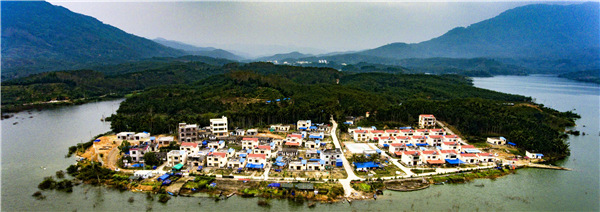 |
|
Qiandui village on Hainan Island is surrounded by water every year during the rainy season. [Photo by Chen Yuancai/For China Daily] |
Green tourism has provided new hope for residents, Ma Zhiping reports in Qiongzhong, Hainan province.
Members of the Li ethnic group of Qiandui in Hainan province love to call their village "a grassland in spring and summer and a sea in autumn and winter". It is a vivid expression that encapsulates the local beauty as the seasons change.
With mountains on three sides, and the upper branches of the Wanquan River on the fourth, fields in front of Qiandui village in Qiongzhong, center of the tropical island, become a "grassland" when villagers grow vegetables, maize, peanuts and rice, as the dry season starts in spring and summer. The fields, more than 133 hectares in area, turn into a "sea", when rainfall, as much as 200 millimeters on average, swells the rivers in autumn and winter.
The villagers led a humble life for a long time, because of limited farmland, lack of transportation and their simple means of production, says 40-year-old Hu Kaijun, an official with the village committee and head of a tourism cooperative.
In 2014, about 40 percent of Qiandui's 1,121 residents were poverty-stricken, with a per capita annual income of 3,800 yuan ($577), says Hu, who runs a three-floor homestay, the largest and most eye-catching one in Qiandui.
"The natural wonders are producing greater economic benefits for the locals thanks to the development of ecotourism in the past several years," says Hu.
On the third floor of Hu's homestay house, a spacious terrace unfolds as visitors can enjoy a panoramic view of rows of bright red-roofed houses lined with coconut and betel nut trees and vast water areas lined with vibrant mountains.
Fu Yuzhi, a head official of Qiandui, says the life of the villagers began to improve in 2015, when the provincial government and the Qiongzhong county authorities launched supporting programs and provided 30 million yuan of funds to build roads and bridges, and supply natural gas and 4G telecommunication networks that would link the village with the outside world.